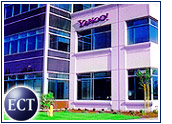
According to a study from Jupiter Communications, fewer than 20 percent of online retailers use eye-catching programs and plug-ins like Java and Flash to help consumers browse their Web sites, thus preventing users from getting the most out of those sites.
As a result, companies could eventually find themselves losing customers as competitors take advantage of new technologies to provide more advanced Web sites.
Consumers, according to Jupiter, “expect a richer online shopping experience” because they know the technology is out there, having seen it on other sites.
Aiming at ‘Lowest Common Denominator’
“Many retailers have designed their sites for the lowest common denominator, which is shortsighted, particularly for vendors of high-consideration goods,” said Jupiter analyst Lydia Loizides. “This practice ensures support for technology laggards, but retailers must also meet the rising expectations of experienced online shoppers.”
When analyzing purchases, Jupiter said, companies “have focused on purchasing and checkout phases, and hyper-focused on abandoned shopping carts and purchase forms.” Yet by incorporating technology that would allow easy product and price comparison, advanced searches and better visuals, the firm said, e-tailers could attract and keep more customers.
Move or Lose Market Share
Companies that sell “complex” products like clothes, cars, real estate, furniture and housewares “have the opportunity to integrate advanced applications that can satisfy the needs and address the problems of more experienced online shoppers,” Jupiter said. “Merchants must move to meet consumers’ heightened expectations now as late movers will lose audience and market share.”
As companies move to add new features, “competitive pressure will make support for advanced technologies a must-have for sites operating in the complex product market,” said Loizides. “Retailers will have to offer more to their customers than just basic textual representation, search, and price comparison.”
Listening to Customers
Most e-tailers cite customer feedback as a primary factor in the decision to use advanced technologies on their Web sites, according to the study. Yet a separate survey conducted by the firm found that more than half of online shoppers would use advanced Web page features like virtual dressing rooms and zoom-and-spin technology.
In the past, consumers’ machines may not have supported such heavy-duty multimedia. However, personal computers have become more advanced, with features like speakers and support for processor-intensive work now widespread, according to Jupiter. If e-tailers fail to take advantage of the available technology, the firm warns, they risk losing customers to those who do.
“Online retailers should place technologies on a graduating scale of complexity,” Jupiter said. Sites can offer a range of options, so consumers with newer PCs can use the virtual dressing rooms, for example, while more low-tech shoppers can avoid them.












































Social Media
See all Social Media